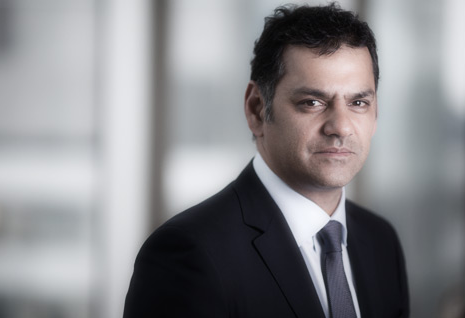Stephen Thariyan, Global Head of Credit at Henderson, reviews the credit markets in Q1 highlighting the ‘two-thirds—one-third’ nature of the markets. Financials came under particular pressure over the quarter exemplified by Deutsche Bank’s ordeal. While investors are happy to be back in the markets for now, as central banks have acted effectively to bring confidence back, challenges lie ahead in 2016. Thus, Stephen believes investors should be prepared for volatility to resurface.
Can you give a brief summary of corporate bond markets in Q1 2016?
It was a tough start to the year. It seems that in the first two months, particularly in February, the markets were discounting all the possible bumps in the road for 2016: concerns about central bank policy, illiquidity, Brexit, the oil price, China and growth in general. This led to quite a major sell-off across all capital markets, both debt and equity.
The end of February and March then saw a strong recovery, essentially based on the oil price, rallying from a low of US$26 upwards. That resulted in good returns, especially in high yield and emerging markets; total returns being positive across most currencies, across most credit markets, and excess returns again being broadly flat across most credit markets. So, a quarter of two thirds/one third: a very poor start and a strong recovery that continued into Q2.
Can you explain why the financial sector underperformed, particularly Deutsche Bank and subordinated banks/insurers more broadly?
The financial sector came under particular pressure in the first quarter. This was based on a combination of issues. Deutsche Bank in a way personified this with a situation that led to a significant sell-off in its bond prices, CDS and equity price. In a negative interest rate world, the core way the banks make money is challenged (ie, use short-term borrowing to lend for longer periods). This means significantly reduced returns from investment banking, especially in trading, fixed income, commodity and currency.
Banks, such as Deutsche, reported their first major loss in around eight years and there is a huge degree of outstanding litigation surrounding these banks, totalling billions. The last point was, especially with respect to Deutsche, concerns about the AT1 securities, contingent capital notes, which are complex subordinated financial securities, in existence to increase the capital buffer. There was a rumour that Deutsche would not pay its coupon, and even though these securities are designed to protect the public, the potential triggering spooked investors. Deutsche did recover the situation, but for the first time it felt a bit like 2008.
So financials generally took an awkward situation largely on the chin, given that central banks, especially in Europe, are trying to make banks lend money. Banks, however, are deleveraging, carrying lots of liquidity and struggling to find borrowers to borrow that money.
What is the outlook for credit markets and what themes are likely to drive the markets?
We are at an interesting point. We have suffered from a difficult first few months in 2016. The central banks have come in and almost acted in unison, with the European Central Bank subtly talking about a movement in monetary policy, but more importantly, the purchase of corporate bonds in the next few months. They haven’t given any details but the sheer fact that they are prepared to do it has given the markets confidence that there is a bidder for bonds.
It is debatable how effective that would be but the markets have rallied as a result. That combined with the Fed being a little more dovish a week later gave the capital markets, debt and equity, a huge fillip. Equity markets strengthened, bond markets strengthened, new issuance has started and the oil price steadied. A combination of all those events and generally benign data means that the investor seems happy to be back in the market again.
There is a degree of suspicion about how long this will last, but I think as we have said ever since the back end of last year, given all the different events that could occur in 2016, we are in for a volatile time. Certainly central banks have acted effectively so far in giving investors the confidence that they should be back in the markets buying both debt and equity.

